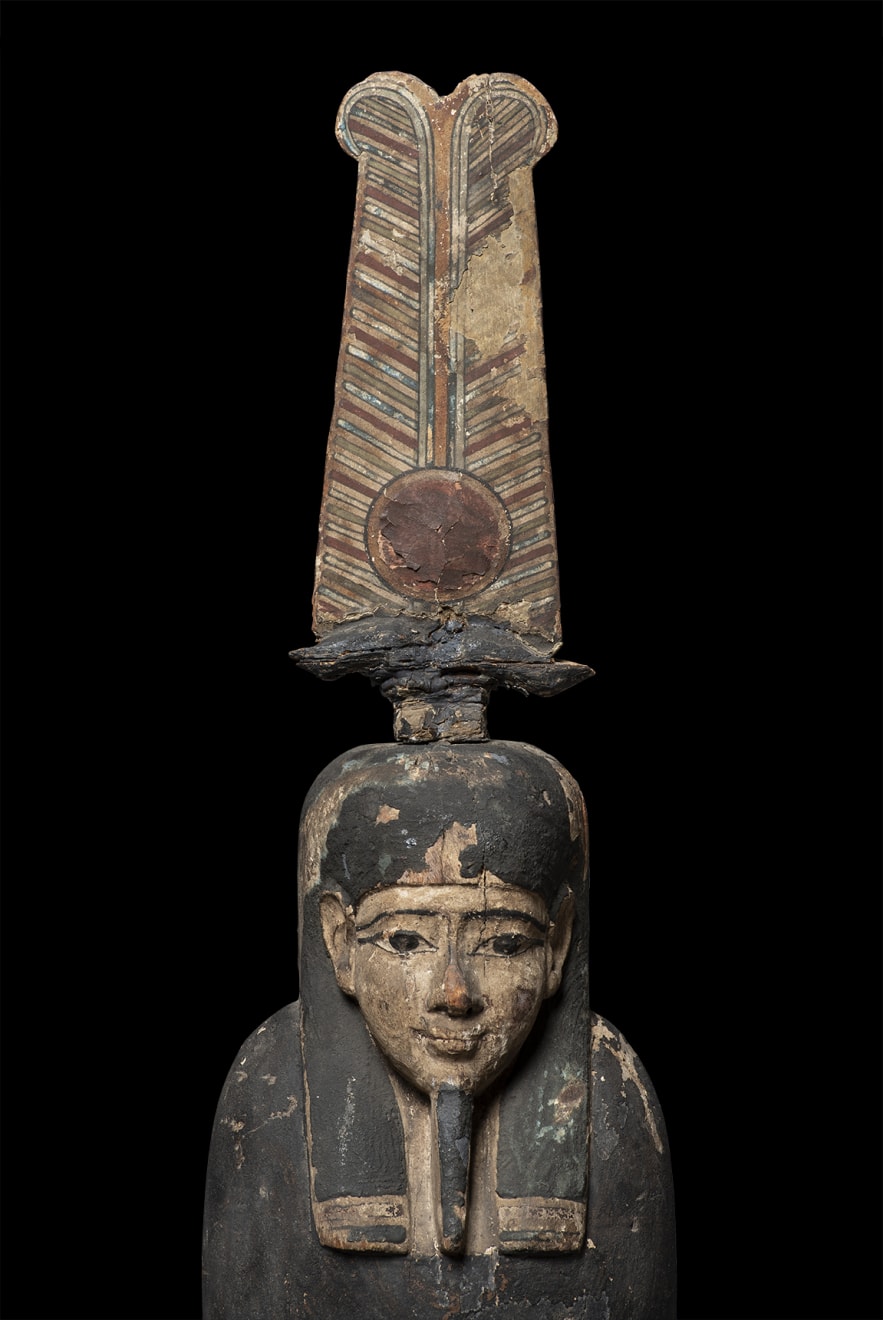Egyptian
An Egyptian wood Ptah Sokar Osiris for the Osiris Musician Priestess of Min, the daughter of Ta-Sherit-Min, Akhmim, Ptolemaic Period, circa 200 BC
Wood
Height: 79.5 cm
Further images
The painted mummiform figure wears the Atef crown, with double plumes, ram horns and a dark red sun disk. The body, wig and facial details are painted in black. There...
The painted mummiform figure wears the Atef crown, with double plumes, ram horns and a dark red sun disk. The body, wig and facial details are painted in black. There are the remains of a hieroglyphic inscription in a column down the front of the body and the back pillar. The figure stands at the end of a rectangular plinth, which is in the form of a coffin. The coffin is inscribed with black painted hieroglyphic text along each side with polychrome decoration above and below. At the other end of the plinth there is a cavity, the opening is covered with a wooden sculpture of a mummified hawk (not belonging) representing the protective deity Sopdu.
Provenance
Probably from Akhmim, Egypt, circa 1890Hannen Collection, UK. Accompanied by a collection card stating it was shown to the British Museum in July 1959
Bonhams, London, 06 December 1994, lot 278
with Galerie Rhea, Zurich, December 1994
Literature
The figure represents the funerary deity Ptah-Sokar-Osiris in his human-faced form. This composite deity represents Ptah, the creator god of Memphis; Sokar, the Memphite god of the dead and the necropolis; and Osiris, the chief god of the afterlife and ruler of the underworld. Together, they suggest birth, death, and resurrection.The statue would have been placed in the tomb of its owner, a woman whose title was 'the Osiris Musician Priestess of Min' and named as 'the daughter of Ta-Sherit-Min, Mistress of the House'. The hollow cavity in the pedestal on which the figure stands would have contained a linen-wrapped object, sometimes a roll of papyrus inscribed with spells to assist the owner in his afterlife, or alternatively a mummified animal.
The colours used on this figure are indicative of its funerary purposes. Black, as used on the body of the figure, was seen by the ancient Egyptians as connected with the underworld and fertility, death and afterlife, and was used frequently on all kinds of funerary objects. Blue, as used on the wig, represents the sky and water, and is also associated with the gods. There are two Ptah Sokar Osiris figures in the British Museum (EA20870 from Akhmim; EA9736 from Asasif) with similar colouring of the body and wig: N. Strudwick, Masterpieces of Ancient Egypt, London, 2006, pp. 294-7.
This Ptah-Sokar-Osiris is interesting as not only was it for a woman, but she is also identified by association with her mother. There is a stele in the British Museum (EA1139) found at Akhmim for 'Tasheretenmin, Priestess of Min,' it is possible that this is the mother of the owner of our Ptah-Sokar-Osiris.













